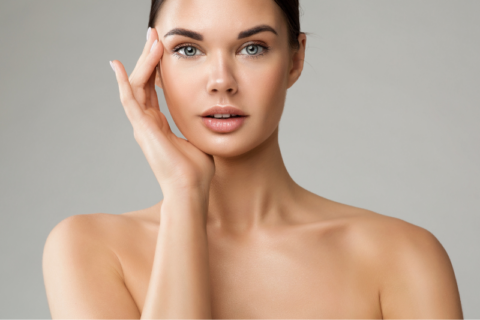Aging Gracefully: Understanding the Natural Aging Process

Aging is an inevitable part of life, and as the years go by, our bodies undergo a series of changes that manifest both internally and externally. These changes are a natural part of the aging process and affect various aspects of our appearance, including collagen loss, fat pad changing, and bone loss in the face. In this blog, we will explore the timeline of the aging process and delve into the science behind these transformations.
When Does the Aging Process Begin?
The aging process is a gradual journey that begins at birth. However, the visible signs of aging typically become noticeable in our late 20s to early 30s. The rate of collagen loss in the human body can vary from person to person and depends on various factors, including genetics, lifestyle, and environmental factors. However, it is thought that on average we lose 1% of collagen per year starting at age 20. Here’s a breakdown of how age affects our appearance:
Collagen Loss:
Collagen is a structural protein that provides elasticity and firmness to our skin. As we age, our bodies produce less collagen, leading to a decrease in skin elasticity. This results in the formation of fine lines and wrinkles, which often appear first around the eyes and mouth. The collagen loss process becomes more pronounced in our 40s and 50s.
Fat Pad Shifts:
The distribution of facial fat changes as we age. In our youth, facial fat is evenly distributed, giving the face a full and youthful appearance. However, with time, fat pads begin to shift downward due to the effects of gravity and changes in the facial structure. This shift can lead to sagging skin and the development of jowls.
Bone Loss in the Face:
The bones of the face also undergo changes as we age. Bone density decreases, particularly in the jaw and cheekbones. This loss of bone mass can contribute to changes in facial shape and structure, resulting in a less defined jawline and cheekbones.
Factors Influencing the Aging Process
Several factors can accelerate or influence the aging process, including:
- Genetics: Your genetic makeup plays a significant role in how your skin ages. Some people may have genes that make them more prone to wrinkles or sagging skin.
- Lifestyle Choices: Habits such as smoking, excessive sun exposure, poor diet, and lack of exercise can accelerate the aging process and lead to premature signs of aging.
- Hormonal Changes: Hormonal fluctuations, particularly in women during menopause, can impact collagen production and skin hydration, contributing to visible aging signs.
Managing the Aging Process
While aging is inevitable, there are steps you can take to gracefully navigate this journey and minimize its effects:
- Skincare: A consistent skincare routine that includes sunscreen, moisturizers, and products with antioxidants can help protect and nourish your skin.
- Healthy Lifestyle: Maintain a balanced diet, stay hydrated, exercise regularly, and avoid smoking and excessive alcohol consumption to support overall health and youthful skin.
- Non-Surgical Treatments: Various non-surgical cosmetic procedures, such as dermal fillers and biostimulators such as Sculptra, can help restore lost volume and reduce the appearance of wrinkles.
- Bone Health: Ensure you receive adequate calcium and vitamin D to support bone density and overall facial structure.
The natural aging process is a part of life, and it manifests differently in each individual. Understanding the science behind collagen loss, fat pad changes, and bone loss in the face can help you make informed decisions about skincare and cosmetic treatments. Embracing the journey of aging with grace and confidence is about maintaining your health, nourishing your skin, and making choices that align with your unique needs and preferences. Remember, age is just a number, and the beauty of life continues to shine through at every stage. Schedule your free consultation today and let’s discuss a plan to age gracefully.

